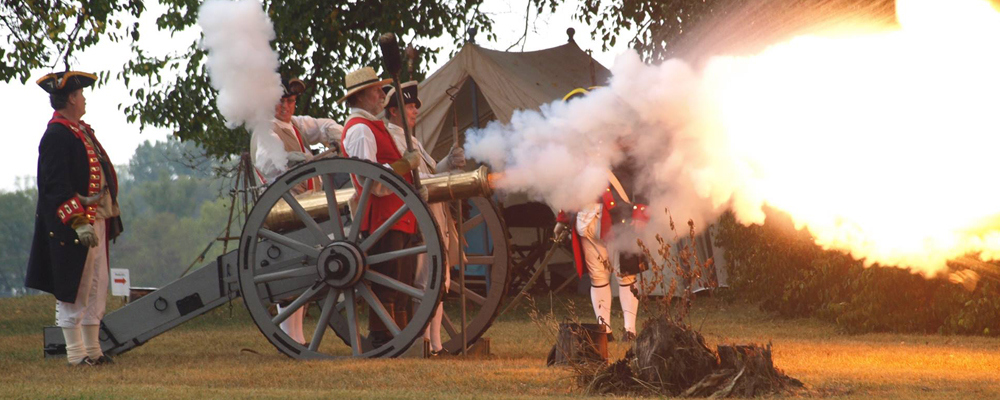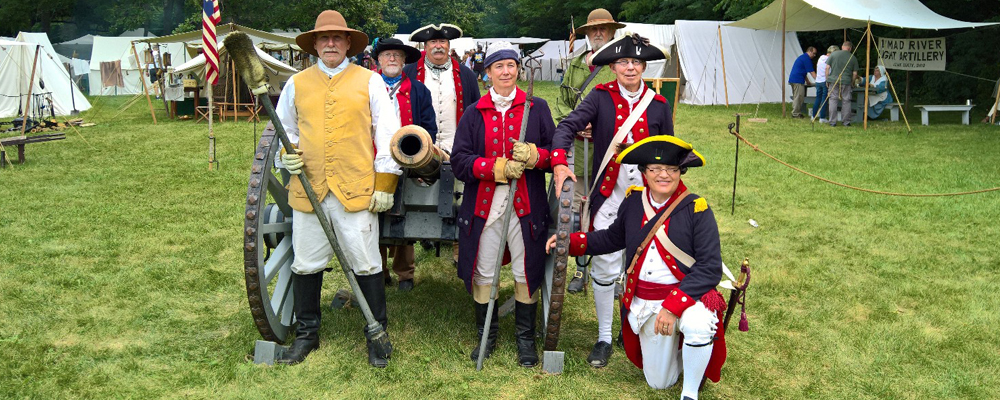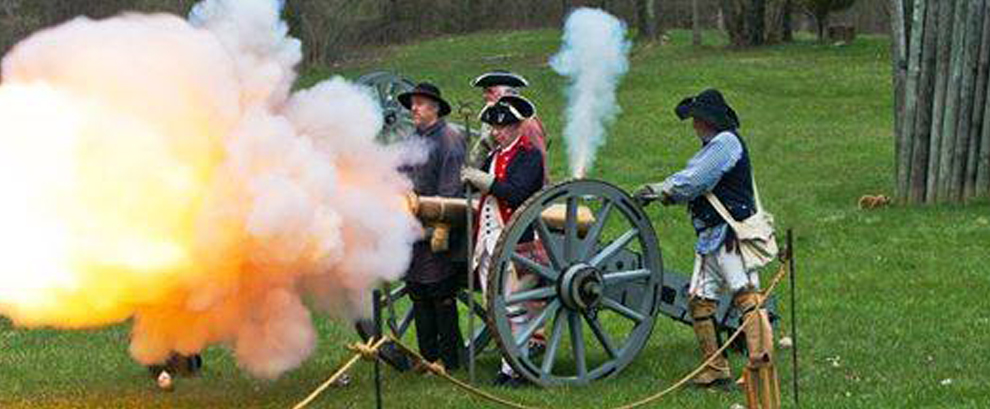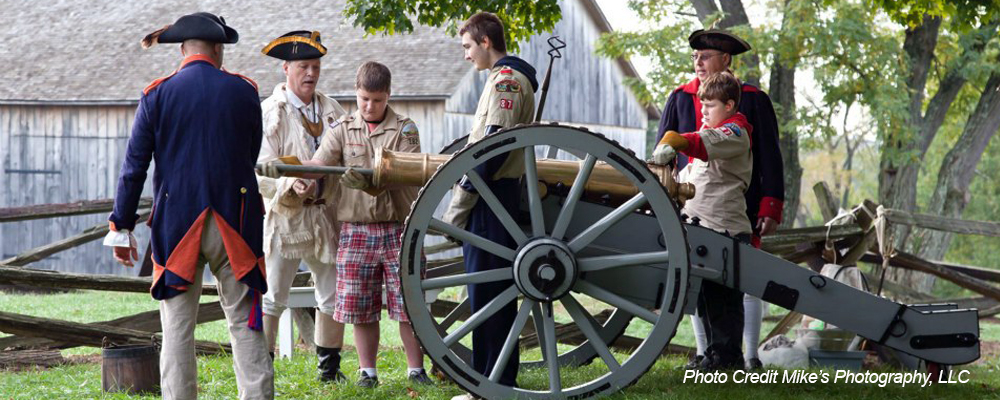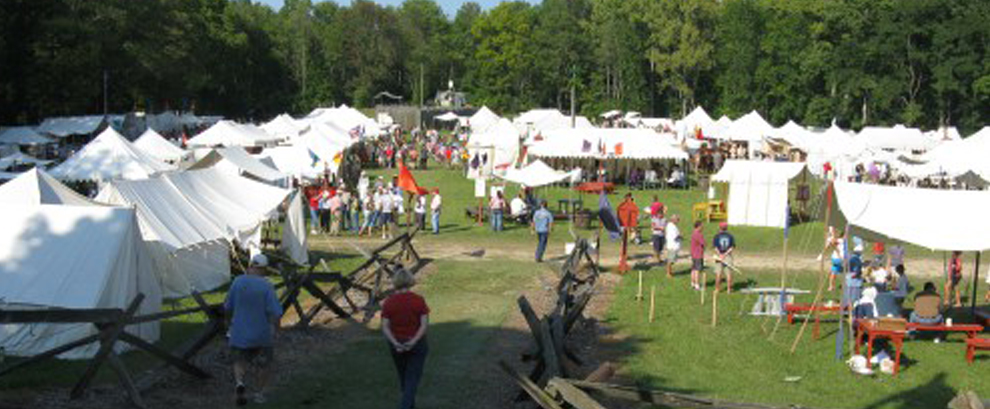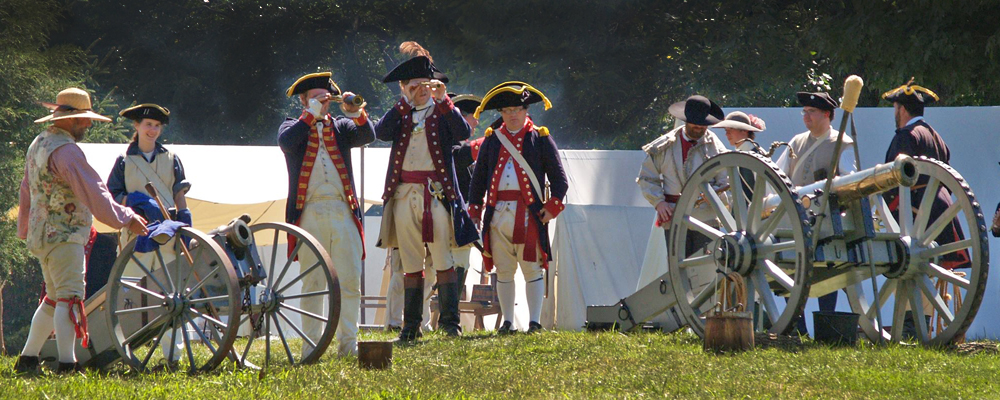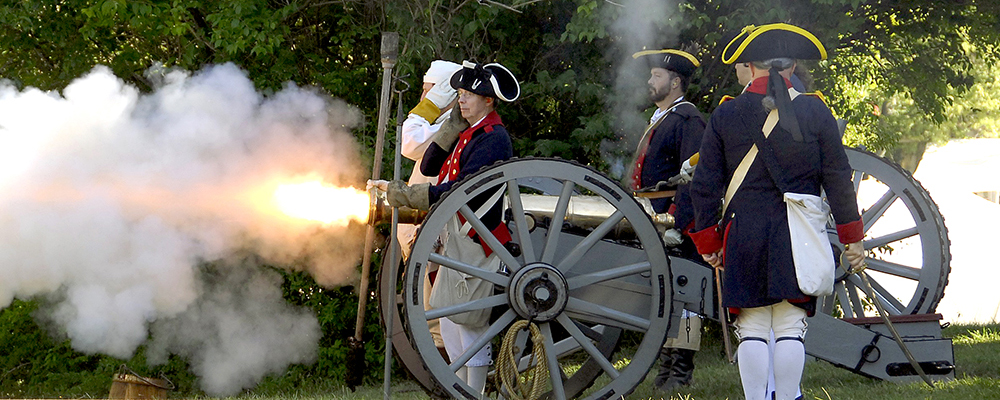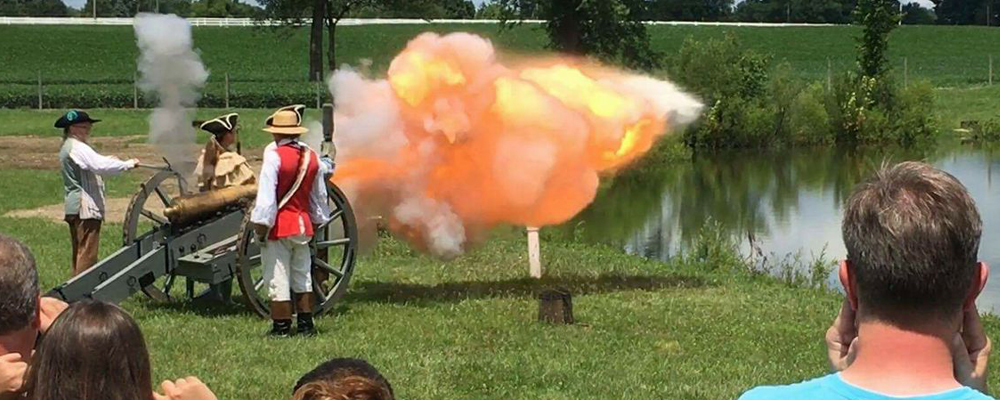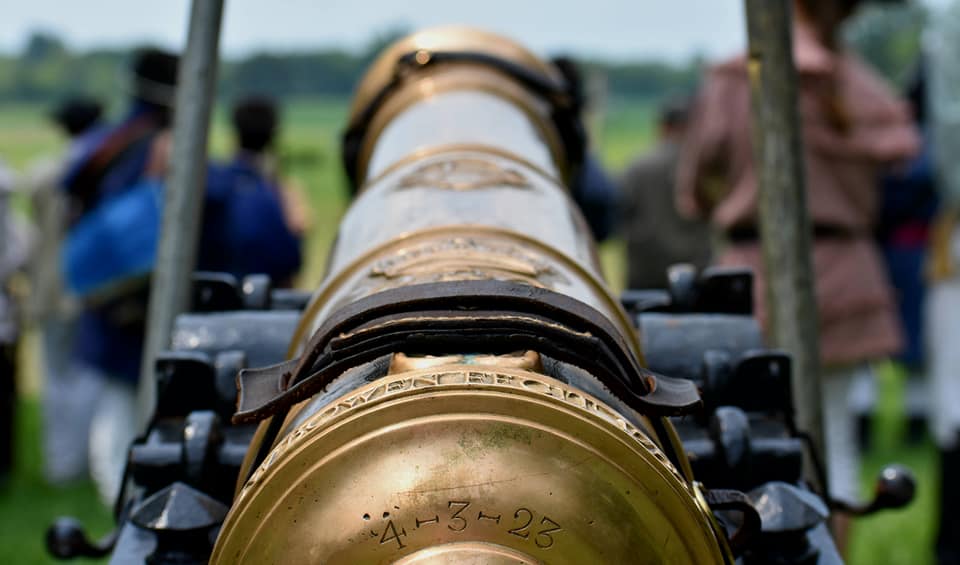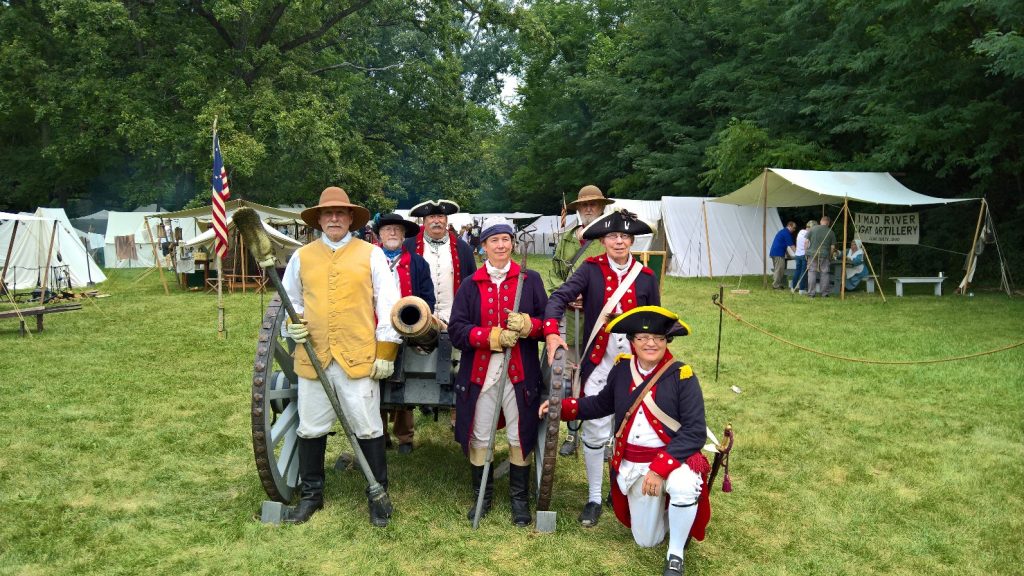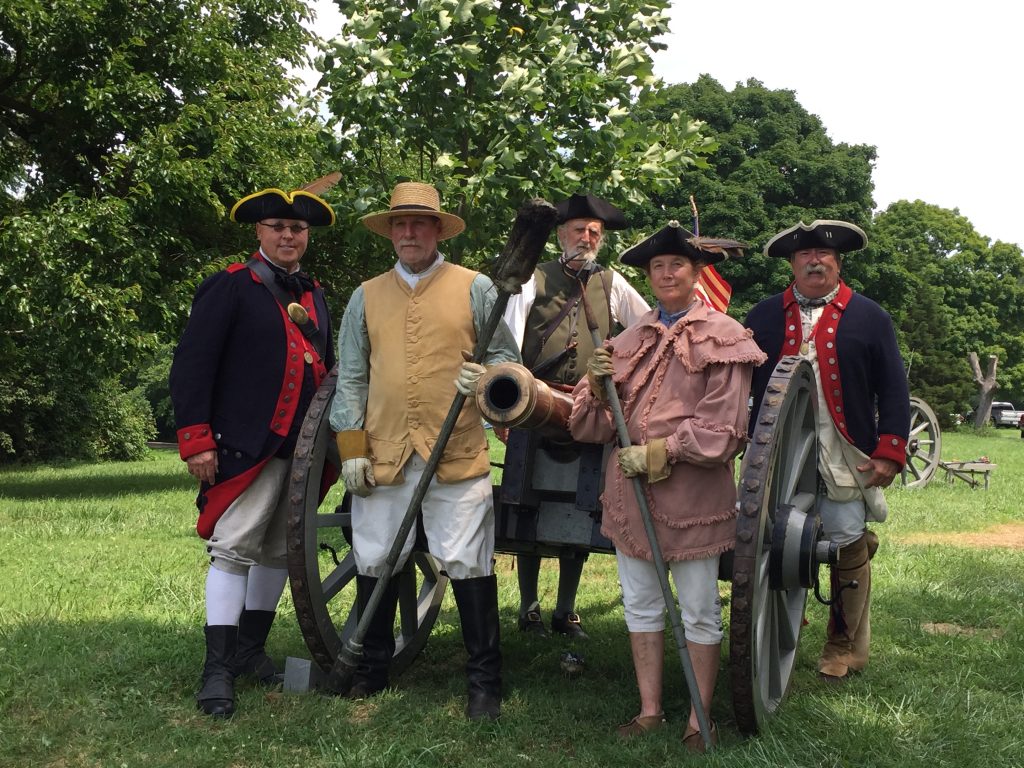First Mad River Light Artillery
Announcing – Muzzle Loading Cannon Class!
Saturday April 13, 2024 at George Rogers Clark Park near Springfield Ohio
National Muzzle Loading Rifle Association (NMLRA) Certified Cannon Instructors from the First Mad River Light Artillery (FMRLA) and the 4th Indiana Light Artillery– will be presenting a class in Muzzle Loading Artillery. For complete information go to our Upcoming Events tab.
![]()
History of a Light 6 Pounder
In 1779, Colonel George Rogers Clark, commander of the Illinois Regiment of Virginia State Troops, assaulted British held positions in present-day Illinois and Indiana, which culminated in the taking of the town of Vincennes, the capture of Lt. Governor Henry Hamilton, “The Hair Buyer,” and obtaining some artillery, including a Light 6 Pounder made in 1755…
In 1780, the Shawnee town of Peckuwe was a major base of operations for the British army and their Native Allies. Used as a storage and training area, as well as a breadbasket, the town of Peckuwe was frequented by Natives and their British advisers, and boasted a British Army-built stockade. On August 8 of that year, Colonel Clark had taken 1000 men from the Kentucky country, invaded to the north of the Ohio, and was poised just south of the native village. His objective was to destroy the village, its 800 acres of growing corn, and its stockade. To accomplish the last, he brought with him the very same 6 pounder he had captured from Vincennes the previous year…
…and now, that 6 pounder once again guards the site of its greatest glory, The Battle of Peckuwe…
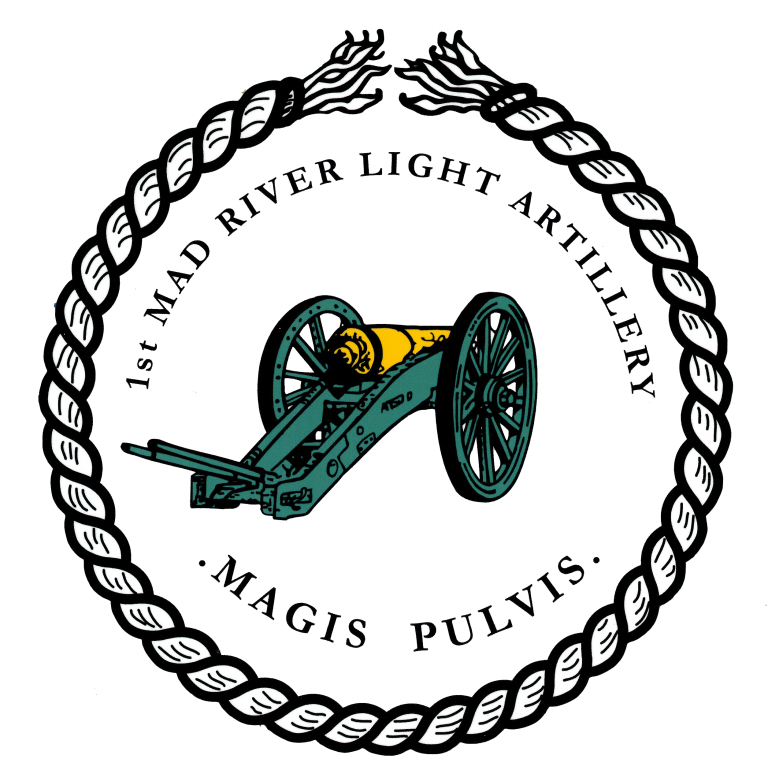
About The First Mad River Light Artillery:
The First Mad River Light Artillery was founded in 2003 to participate in the 225th commemoration of the Battle of Peckuwe fought on August 8, 1780, between George Rogers Clark, with 1000 Kentucky militia and Virginia Regulars, and the Shawnee leader Catahecassa, “Black Hoof”, and his approximately 400 Native troops. The battle is the largest battle of the American Revolution fought west of the Allegheny Mountains, and the battlefield is located 5 miles west of the present city of Springfield, Ohio, at the current site of the George Rogers Clark Historic Park.
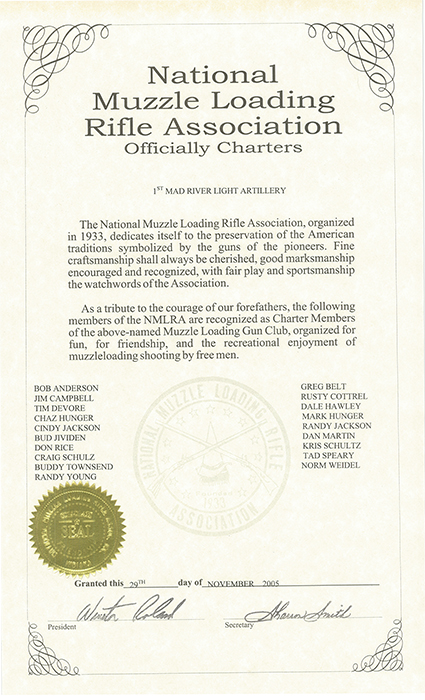
The FMRLA’s primary weapon, and the focus of our unit, is Clark County Park District’s replica British Light 6-Pdr. Battalion Gun, an exact replica of the cannon Clark used in the Battle of Peckuwe.
The FMRLA is a multi-era unit, and has participated in events from
the Jacobite Rebellion to the War of 1812, with a focus on the American
Revolution, and the use of the Light 6 Pounder by Colonel Clark at the
battle of Peckuwe. The name of our organization reflects our geographic
location, our home park being but 1/4 mile north of the Mad River in
Clark County, Ohio; but we assume the identity of an actual unit for
each time period in which we participate. The period we typically
portray is the American Revolution, through the War of 1812.
For
the period of the American Revolution, we portray Clark’s Company of
Virginia State Artillery, the unit that provided the skilled
artillerymen who manned the gun at the Battle of Peckuwe. From 1778
until 1781, the State of Virginia put into the field an artillery
regiment of its own. Many of these men served in ordinary fashion under
regular company officers.
George Rogers Clark however, had an assembly of artillerymen, all originally from different units, who were brought together to assist him with the manning of his ordnance. When the vast majority of the Virginia State Artillery was captured by the British at Charleston, South Carolina, or massacred shortly thereafter, the remaining soldiers were absorbed into the 1st Continental Artillery, except for those men detailed to Clark, who remained on the rolls as members of the Virginia State Regiment of Artillery. It is these hardy souls to whom we pay homage, and to whom we strive to portray in a manner befitting their sacrifices and accomplishments.
For the War of 1812, we may portray Captain Alexander Gibson’s Company of Ohio Militia Artillery, filled with trained artillerists from around the young State of Ohio and originally organized in Butler County, Ohio. Captain Gibson’s Company was the only regularly organized artillery unit on the rolls for the State Militia of Ohio to fight in the War of 1812, during which Ohio was the “front line,”especially during the first years of conflict.
We are a family-oriented military unit with members from a variety of backgrounds and professions, including veterans of the Armed Forces of the United States, university educators, manufacturing, skilled trades, law enforcement, the judiciary, and local government. Our goal is to provide both the experienced reenactor and the novice reenactor the opportunity to participate in the hobby, as well as to learn more about military life in the 18th and early 19th centuries. All while educating the public on the life of the Early American Soldier/ Artillerist, and the history of our nation.
To man the cannon, you must be at least 18 years of age, be an upright citizen, successfully complete a National Muzzle Loading Rifle Association of America, (NMLRA) Muzzle Loading Cannon course (held most often at George Rogers Clark Park) taught by NMLRA Certified Cannon Instructors of the First Mad River Light Artillery and be a member in good standing of the George Rogers Clark Heritage Association.
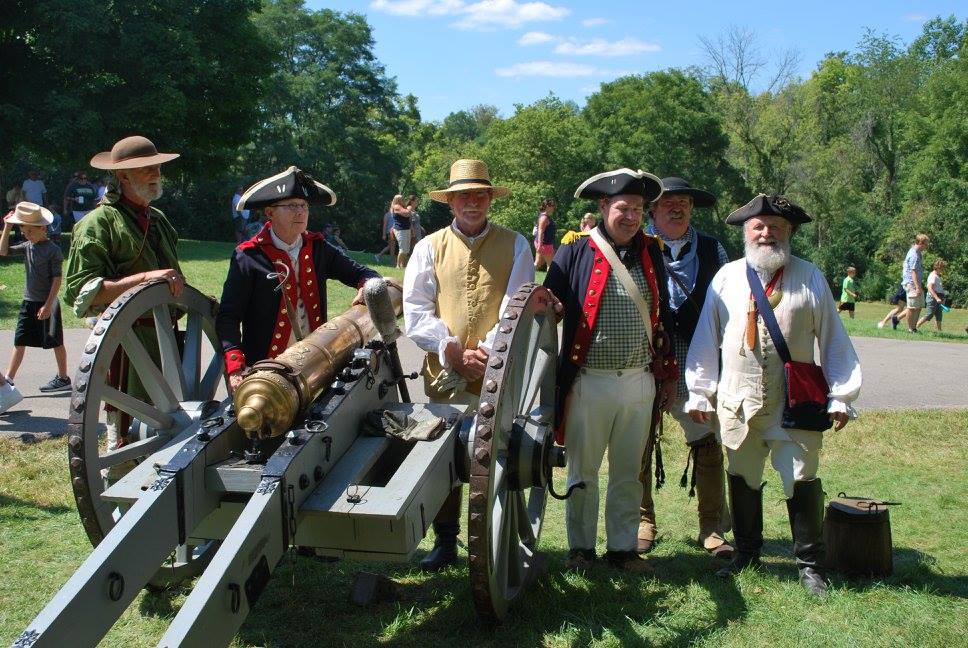
The Piece
The focus of our unit is our replica British Light 6 Pound Gun.
- The gun was ordered in January of 2003. The completed weapon was delivered in July of 2005. The cannon barrel is cast bronze, stamped “W. Bowen Fecit 1755”. The bore of the gun tube is 3.625 inches, with a ¼ inch ignition vent.
- The barrel was manufactured by U.S. Bronze Foundry & Machine, Inc. of Meadville, Pennsylvania.
- Heritage Restorations of Worthington, Pennsylvania was the overall contractors, taking a barren gun tube and turning out a true work of art. They did all of the work (except the wheels) and the etching on the gun.
- Hoffman’s Forge, of Ambridge Pennsylvania, provided all the hand forged iron work.
- Stutzman’s Buggy Shaft and Wheel Works, of Baltic Ohio, provided the two 50 inch diameter limber wheels and the two 48 inch diameter gun carriage wheels.
- The gun carriage and limber are white oak with all hand-forged iron work, as per Muller. The total weight of the weapon system (gun tube on the carriage, and the limber) is 2,200 pounds. The cannon tube alone weighs 555 pounds, and is marked 4-3-23 at the breech, which declares the weight of the gun using the hundredweight system of measure. Therefore, the hundredweight is 4 x 112, which is 448 pounds + the quarterweight of 3 x 28, which is 84 pounds, + the pound weight which is 23 pounds: 448 + 84 + 23 = 555 pounds.
The Uniform
Despite our focus, the First Mad River Light Artillery represents all soldiers of Early America, who fought and suffered to bring Liberty to this land, and whose sacrifices and hardships enable us to enjoy the lives we all lead today. Therefore, the possession of period-appropriate clothing and equipment for militia service is all that is required of members of the FMRLA. We do however, have uniform guidelines for those wishing to portray Regular Artillery, or Regular Infantry attached to the artillery crew.
For the American Revolution, the enlisted artillerymen wear a blue coat, of Continental Army cut, faced and lined in scarlet, with plain brass buttons, and no lace (the uniform coat of the Virginia State Artillery, and later, units of the 1st Continental Artillery Regiment). They wear white small clothes (waistcoat and breeches), and a cocked or round hat (laced yellow, for the artillery, but may also be unlaced). The Regular Infantrymen attached to serve with the gun wear a blue coat of Continental Army cut for either Line or Light Infantry, faced either red or white, lined in white, with buttons of pewter (the standard uniform coats of Virginia troops either State or Continental Line). The infantry also wears white small clothes and a black cocked or round hat (laced in white for infantry or unlaced), or a light infantry cap or helmet. Those wishing to wear the uniform of Regulars or any other type are encouraged to contact us before making or purchasing anything differing from our guidelines. Any appropriate period footwear is acceptable for field service.
Other equipment for service needed is any period-appropriate haversack or canteen. If mustered for service as infantry, (which was common during both the 18th and 19th century), a period-appropriate cartridge box or pouch plus a smoothbore musket of French, British, Dutch, or Committee of Safety design will also be required. Rifles are limited to militia infantry use unless other arrangements are made.
We also have uniform guidelines for service as regulars during the other periods that we portray, but it is advised that those who join the FMRLA work first on militia clothing and a uniform for the Revolutionary War, as most of our events are of that era, or immediately after.
FMRLA Officers
- President: Phil Campbell
- Vice President: Rusty Cottrel
- Treasurer: Cindy Jackson


